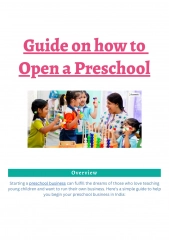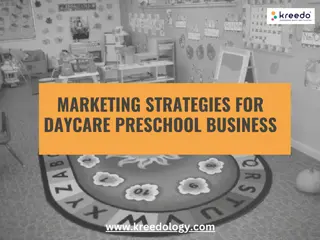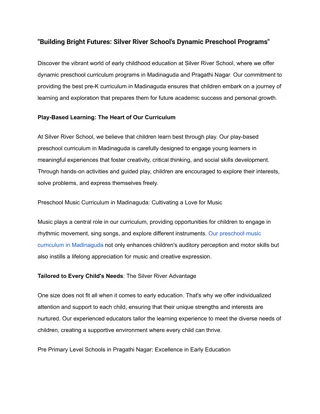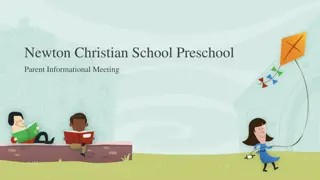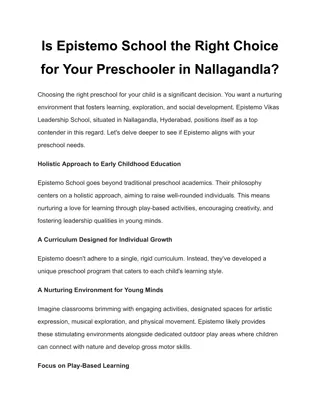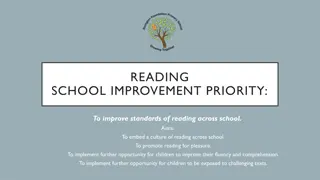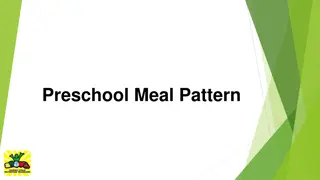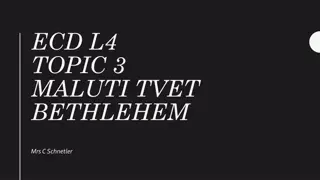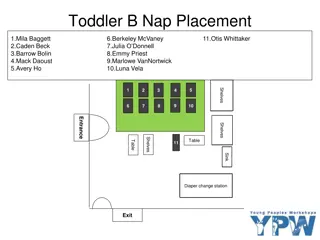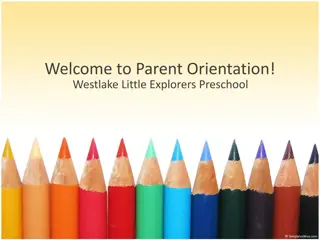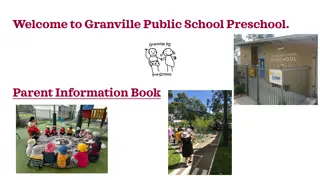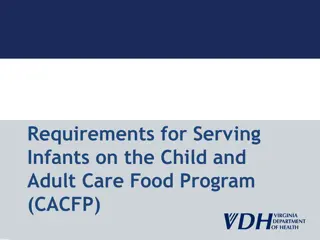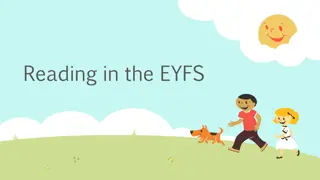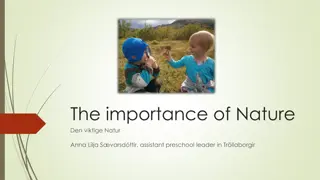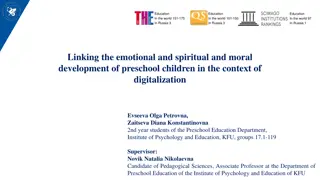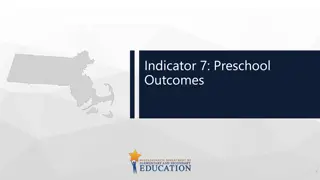Developmentally Appropriate Reading Activities for Preschool Children
Participating in story time is crucial for fostering a positive attitude towards books, expanding vocabulary, and nurturing a love for reading in 3-5-year-old children. Effective steps for reading and telling stories include selecting suitable stories, becoming familiar with the narrative, deciding to read or tell the story, and arranging a comfortable setting to engage children. These activities support cognitive development and language skills in preschoolers.
Download Presentation

Please find below an Image/Link to download the presentation.
The content on the website is provided AS IS for your information and personal use only. It may not be sold, licensed, or shared on other websites without obtaining consent from the author. Download presentation by click this link. If you encounter any issues during the download, it is possible that the publisher has removed the file from their server.
E N D
Presentation Transcript
ECE I Objective 5.02 Apply Developmentally Appropriate Reading Activities for Pre-school Children ages 3-5
Participating in story time is one of the most essential reading activities for 3-5 year old children. Stories help children develop positive attitude toward books increase their vocabulary instill a desire to read
What does this say to you? Directions: Color the picture Write what you think this picture means.
Here are some basic steps for reading and telling stories effectively.
Select an appropriate story Based on the age and cognitive development of the children Select anti-bias stories that are free of stereotypes
Become familiar with the story Read the story several times To build oral reading skills, read in front of a mirror or record yourself as you read
Decide if you will read or tell the story If you read children can look at illustrations as they listen children may become more interested in reading If you tell the story you may be better able to portray the characters and act out the story
Plan/arrange a comfortable setting in which to read/tell the story To help children stay focused, plan a setting that is as free of distractions as possible Plan to seat children in a group, as on carpet squares, pillows, or a patchwork quilt
Plan a grouping arrangement that will be workable Try to keep the story group small Group children according to age and interests
Plan a settling-down activity to get children ready to listen Talk with the children about things that are happening that day Use a finger-play, puppet, or other activity or prop to help the children settle down
Introduce the story Use strategies to help set a mood ask questions make a personal comment show the book cover talk about what the story might be about Use props live examples stuffed examples pictures store in pockets of a storytelling apron or other interesting location such as a story chest or box Explain words that the children may not know before beginning to read Use facial expression, posture, and/or tone of voice to communicate that something special is about to happen
http://oi28.tinypic.com/205rtjo.jpg During the Story
Read with pleasure and feeling Maintain eye contact with children Pause at strategic points for effect Read in a normal speaking voice except when altering volume or pace for effect
Handle interruptions Accept interruptions pleasantly Answer questions with patience Ignore children who wiggle and praise children who sit still
Use strategies to maintain children s interest in the story Use a variety of storytelling techniques draw and tell, flipcharts, flannel board, and magnetic board Vary your volume or tempo If necessary, skip over details If interest in the story is lost, end the story early
After the Story
Make it clear that the story is finished Ask a question about the story Thank the children for listening or give them something to remember the story by
Evaluate your storytelling/reading methods Make note of children s reactions (responding during reading, asking to hear it again) Make note of your strengths and weaknesses Complete a storytelling/reading rubric to evaluate your effectiveness
Now, what does this picture mean to you? Write all around the picture what it means to you.
Read Me a Story-handout Directions: Complete the handout, Read Me a Story by answering the questions in each box about the children book s on your table.
Reading Organizer - BDA Directions: Complete the handout labeled, Reading Organizer-BDA. Read Chapter 19, Working with Young Children Write responses in the appropriate columns for before, during, and after reading. I need at minimum 10 thinks you learned AFTER you read Chapter 19.
Review of Childrens Books Homework! Write these directions on your own paper. Label the top of your paper with the same title as what s on this PP slide. Due Date: Thursday, November 18th. Purpose: Early Childhood Professionals need to become aware of the variety of books available for language/reading activities. This assignment/handout gives you a starter list of books to look for as you look at children s books in the library, at internship sites, in book stores, online, and other places. Directions: Locate Review of Children s books on Ms. Hobbs website under ECE I, Objective 5.02. Out of the 100 some books mentioned on the document, I need you to research 25 of the books and make comments about the book in the comment column of the handout. Be sure the comments are effective and can be understood. Good comment: This book can be used for teaching diversity, Native Americans, in preschool. A good follow-up activity could be creating and designing feather hats. Bad comment: This book looks good.
Picture Books and Storybooks handout Directions: Select one of the books on your desk to use to complete Picture Books and Storybooks, to apply what you ve learned as you look through the chosen book to answer questions on the handout. Record your answers in the space provided on the on the handout about the storybook. If you need additional space, you may write on your own paper and staple the copy.
Working With Young Children Chapter 19 Guiding Storytelling Experiences Directions: Complete the following assignments using the above book and Chapter, not your friends or neighbors. Read Chapter 19 Complete questions 1-43 on the handout using Chapter 19. Define all Key Terms in the Chapter. Answer all the questions at the end of each section and chapter. 1. Write the question on your own paper followed by the answer in complete sentences. **Turn in all work when complete. 1. 2. 3. 4.
Key Terms Directions: Open: Ms. Hobbs website File Manager ECE I 5.02 Storytelling Find 5.02 Key Terms Complete the Key Terms handout using the PP.

 undefined
undefined











